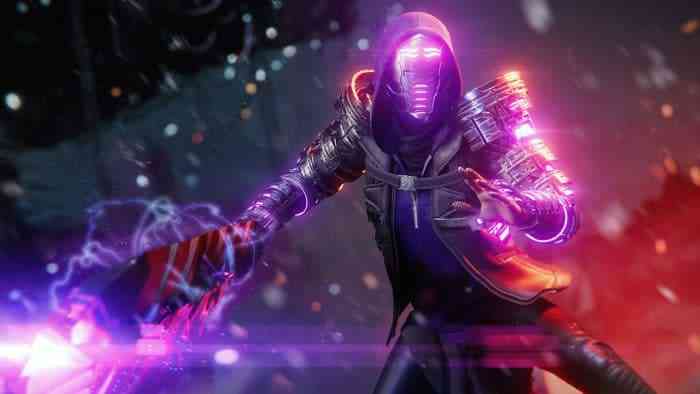Spider-Man: Miles Morales Launches the Next Gen In Style
With great power, comes great responsibility. True. Thanks, Uncle Ben. For Insomniac’s latest creation – Marvel’s Spider-Man: Miles Morales – the opposite is also accurate. Young Miles carries the great responsibility of being the flagship launch title for the PlayStation 5 and has the hype jet flying with full afterburners. While it isn’t polished to the same mirror sheen of the 2018 original, Miles Morales makes some smart additions to the formula while telling a thoroughly modern tale and showcasing the raw horsepower of the PS5.
*This review contains no spoilers for Spider-Man: Miles Morales, but necessarily covers some aspects of Marvel’s Spider-Man (2018)*
Miles Morales is a legendary character. In plenty of circles, he’s even more popular than the OG Spider-Man, Peter Parker. He factored heavily in Insomniac’s last Spider-story, where a tragedy involving Miles’ father raised the stakes tremendously for Peter. We join Miles’ story a year after he gained Spider-powers, as an inexperienced, but promising Spider-Man. Under the tutelage of Peter, he’s come to be known as the ‘Other Spider-Man.’
When Peter takes a vacation, 17-year-old Miles is on his own. He’s THE Spider-Man, and it’s up to him and his crew to save New York City from both an evil corporation and the anarchist Underground. It’s stock superhero fair, but a compelling tale nonetheless. Huge shout-out to Insomniac for paying such attention to inclusion – characters like Haley are equally unexpected and delightful. I love a bombastic action sequence as much as the next guy, but it was the down moments that stuck out to me more. Experiencing Miles’ Harlem from his perspective was electric, from a casual Christmas dinner with his family to a super diverse night market.
The writing is strong, and the performances great across the board. Miles’ inexperience and immaturity come through really well in Nadji Jeter’s performance, while Yuri Lowenthal’s Peter continues to be a standout for me.
Keeping things fresh is key, and I’m so pleased to see effective storytelling about a totally different community than the last game. Rather appropriately for the current social climate, the game’s tagline is “Be Yourself.” Over the course of 10 or so hours of the main storyline, we watch Miles grow up, cement himself as part of the Harlem community, and ultimately deliver the message that we’re all capable of the spectacular.

The run time isn’t tremendously long, but there are no throwaway moments or sequences. The plot is constantly pressing forward, and there’s an entertaining variety of side missions and activities to engage in. Thanks to the new Friendly Neighbourhood app, side missions are delivered in a single place and are for the most part entertaining. Many side activities have an analogue from the previous game, such as collectible time capsules (backpacks), Roxxon hideouts (Demon Warehouses), and Spider-training (Taskmaster). There are several others that are entirely unique to Miles Morales too, and they’re all good enough that I went back to mop up after completing the main story. I’ve put in around 15 hours, and still have a few loose ends to tie up.
Miles Morales doesn’t reinvent the wheel, retaining almost everything that made Marvel’s Spider-Man such an outstanding experience. What it does do is change just enough to make this feel like a unique version of that already awesome other thing.
The same old combat system as before is here. That phenomenally animated, exceptionally smooth, and deceptively nuanced combat system. Of course, Miles has different powers than Peter, so things have been tweaked to accommodate that. Miles relies less on gadgets, with standard web-shooters and 3 other options such as holographic drones to distract enemies. What he gains is a set of bioelectricity powers that are awesome. The Venom Punch feels epic every time you use it, especially when woven into a long and complicated combo against ridiculous odds. Miles Morales does a better job of encouraging you to use your powers too. Where basic attacks and web-shooters sufficed the vast majority of the time previously, plenty of enemies require specific strategies or can hard counter your moves. An added tactical layer without losing any fluidity? Big thumbs up from me.

Stealth has been given an overhaul as well, because, well, Miles can turn invisible. That might seem outrageously overpowered, but the balance is relatively good. If anything, I found myself going after increasingly risky maneuvers while trying to stay hidden. It’s certainly possible to do the old ‘stick ‘em all to the wall’ method a lot of the time, but having a bunch of options keeps everything fresh.
Traversal is just as great as it was two years ago. I’ll stick to what I said then – these games feature traversal superior to anything else out there. The neighborhood is friendly, and you’ll want to swing through all of them. Repeatedly. At every time of day and in every weather condition. Why? Because NYC is looking absolutely bananas in Miles Morales.
Tracing Them Rays
Ray tracing. Believe the hype. Holy f*** does it add to the atmosphere of damn near every scene. Windows and puddles are the obvious implementations, but it’s the smaller details that really add to realism. Having surfaces like Spider-Man’s eyes or laptop screens accurately reflect the surroundings seems like an outlandish little detail to focus on, but I noticed it constantly. It looks magnificent, and reason enough for me to vastly prefer the fidelity mode over the 60fps performance option. Pop in is far less noticeable than in the PS4 generation too, with the dense crowds and traffic you’d expect to see in NYC.
Character quality and facial capture was already a strength for Insomniac, but to lean into a cliche, this is, without doubt, a generational leap. Surfaces and materials like Miles’ suit or Phin’s bun are approaching Hollywood CG quality. Miles doesn’t reuse many animations from Peter Parker, and his haphazard, barely-hanging-on web-slinging is gorgeous in motion. It looks absurdly good, and I’m frankly shocked that the screenshots that trickled out pre-release are actually how good those scenes look in game. Combined with some of the slickest animation in the business, the bar for the next generation has already been set very, very high.

Musically, Spider-Man: Miles Morales has a real vibe. The horns and strings that permeated the last game are still here, though often set atop a rad beat. It suits Miles’ personality perfectly, and I’m particularly happy that they bothered to rewrite the Spider-Man theme to suit him. Granted, there’s not a huge variety of tracks, but they didn’t get old over the course of the game. 3D audio is a big component of the PS5 experience, and while I definitely had a better sense of directionality while using the Pulse 3D headset, it isn’t exactly life changing. Not yet, anyway.
Unfortunately, the level of polish in Spider-Man: Miles Morales isn’t always perfect. The AI is inconsistent, occasionally spotting an unspottable man-spider, and other times failing to see a ceiling takedown I’ve done in plain sight. At times button prompts won’t show up unless you’re very precisely positioned, or Spider-Man won’t perch on a clearly perch-able ledge, and I have to assume some of this is pandemic related. Neither is game breaking, but I did hit some other, more problematic bugs. Once, Spider-Man turned into a small cube for a few seconds before disappearing completely (switching suits brought him back), and another time the game locked up entirely. Far from ideal, certainly, but only of minimal impact for one very important reason.

Marvel’s Spider-Man: Miles Morales has no load times. Literally zero. When the game is launched from the PS5 dashboard, the Splash screen shows for about 3 seconds, fades down, and then fades up on the title screen of the game. That alone is screaming fast, but once you select your save file and hit continue, it fades to black, and then fades to the game. It’s 2 seconds, max. It’s jaw-dropping. Ditto when fast travelling. In-game, there’s never a loading screen when transitioning to a new area, either. If this is representative of the performance we can expect from most PlayStation 5 titles, whoa.
Though it’s not as polished as the 2018 original, Spider-Man Miles Morales is a smashing success. It looks sensational and is an absolute riot to play. Miles’ story brings all the drama and feels it needs to, and highlights a community outside what’d normally be on the drawing board for a game like this. Despite some bugginess, this is the game you want to show off your impressive new hardware. I can guarantee I’ll be slinging from Harlem to Hell’s Kitchen daily for the foreseeable future.
**Review code and console provided by PlayStation**
The Good
- Stunning visuals and ray tracing
- Compelling story in a diverse community
- Zero loading
The Bad
- Not tremendously long
- Bugs and glitches

